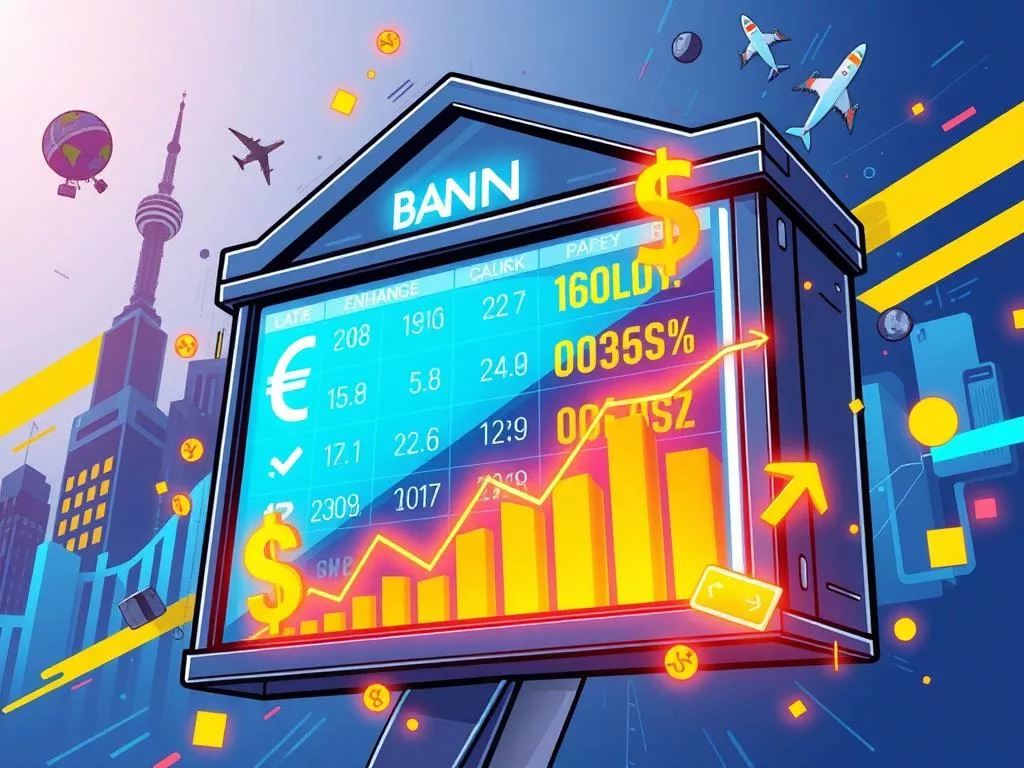Chase Bank is one of the biggest banks in the U.S., with over $2 trillion in assets. This review will look at their services for foreign exchange and international transfers. If you need to send money abroad, Chase might be convenient. But, it’s important to know both the good and bad sides.
Chase offers many money transfer services, like wire transfers. But, these can be expensive. For international wire transfers, fees range from $5 to $50, depending on the service. There are also extra fees from other banks, which can be $10 to $100 per transfer.
Exchange rate fees can also vary, costing 4% to 7% of the amount sent. While Chase has many branches, this review suggests their international transfers might not always be the cheapest. Services like Wise and Currencies Direct might be better. With Chase, you can send up to $250,000 per business day. For more on the best banks for international money transfers, see this guide.
Overview of Chase Bank’s International Transfer Services
Chase Bank offers many services for international money transfers. You can send money to accounts worldwide. You can start transfers online, through mobile apps, by phone, or in person.
The fees for wire transfers depend on how you send them. Sending in US dollars online costs $40. But, sending in foreign currency is cheaper, at $5 or $0 with the Chase app. If you need a banker’s help, it’s $50. Also, there’s a $15 fee for incoming wires.

Chase Bank sends money to over 90 countries in more than 40 currencies. But, their exchange rates might not be the best. They can be up to 7% higher than other services like Wise.
It’s important to know about canceling transfers. You can cancel international wires within 30 minutes. But, domestic wires can’t be canceled once they’re started. Also, you can only send what you have in your account, up to the bank’s limits.
| Transfer Method |
Fees |
Currency Transfer Options |
| Online Transfer (USD) |
$40 |
Available |
| Foreign Currency Transfer (Mobile App) |
$5 or $0 |
Available |
| Banker-Assisted Transfer |
$50 |
Available |
| Incoming Wire Transfer |
$15 |
Not Applicable |
Review of Chase Bank for Foreign Exchange and Transferring Money Internationally
Chase Bank is a big name in banking, known for its international money transfer services. People often check Chase foreign exchange rates because they affect how much money is transferred. Sadly, Chase’s rates can be up to 5% higher than the market average, which is bad for those trying to save money.
It’s also important to look at Chase wire transfer costs. For example, sending money online costs $40 for US dollars and $45 for other currencies. If you do it by phone or in person, it’s $50. Getting money from abroad costs $15, adding to the total cost.

A recent international money transfer review showed that sending $1,000 to Euros through Chase could cost about $28.67 extra. This is because of bad exchange rates and fees. Some people might look for cheaper ways to send money.
| Transfer Type |
Cost (USD) |
Estimated Time |
| Online Transfer (USD) |
$40 |
3-5 Business Days |
| Online Transfer (Foreign Currency) |
$45 |
3-5 Business Days |
| Phone/Branch Transfer (USD or Foreign Currency) |
$50 |
3-5 Business Days |
| Incoming Transfer |
$15 |
Varies |
Chase’s currency exchange fees can increase costs when using their services abroad. Chase cardholders pay a $5 minimum fee for ATM withdrawals overseas, plus a 3% fee on withdrawals. Using a Chase card in foreign currencies also comes with extra charges. It’s key to know all the fees before making transactions.
In summary, Chase Bank has many services and a good system for currency exchange. But, its rates and costs might not be the best for everyone. Those looking to save money might find better deals elsewhere, considering Chase’s fees.
Comparing Chase Bank with Other Money Transfer Services
Looking at international transfer options, Chase Bank stands out for its fees and exchange rates. Traditional banks like Chase charge about $45 for a wire transfer. They also take nearly 13.40% of the total amount as fees. This makes them the most expensive choice for sending money abroad.
Wise, on the other hand, offers clear fees, usually under 1% of the transfer amount. It provides real mid-market exchange rates. This gives users a big advantage when sending money worldwide. For example, Wise can save you 3.03 EUR compared to Chase, showing the savings.
Currencies Direct is another top choice, great for frequent travelers and expatriates. It offers competitive prices and personalized support. This makes it a good option for those who need to send money internationally often.
Here’s a look at fees and pricing for Chase Bank, Wise, and Currencies Direct:
| Service |
Average Transfer Fee |
Exchange Rate Markup |
Transfer Speed |
| Chase Bank |
$45.00 |
Up to 3%+ |
1-5 business days |
| Wise |
Under 1% |
0% |
1-2 business days |
| Currencies Direct |
Varies |
Competitive |
1-3 business days |
The differences in costs and services highlight the importance of choosing wisely for international transfers. Options like Wise or Currencies Direct can save you time and money. For those planning to send money, checking out Wise can help you make the most of your money transfers.
User Experience and Customer Support at Chase Bank
Chase Bank puts customer happiness first by providing many ways to get help. You can visit a branch, use online chat, or the top-rated mobile app. The app, with 4.8 stars on Apple Store and 4.3 on Google Play, makes managing accounts and exchanging currencies easy.
Chase offers 24/7 support for some banking needs, but general customer service is only during business hours. Customers generally like the service, but high fees for international transfers might be a problem. So, think about these fees when using Chase for forex services.
Chase Bank is clear about its fees, with no hidden charges for currency exchange. This honesty builds trust with clients. Even with some complaints about fees, the bank’s mobile app and customer support are top-notch. For more on transferring money, check out this guide.
